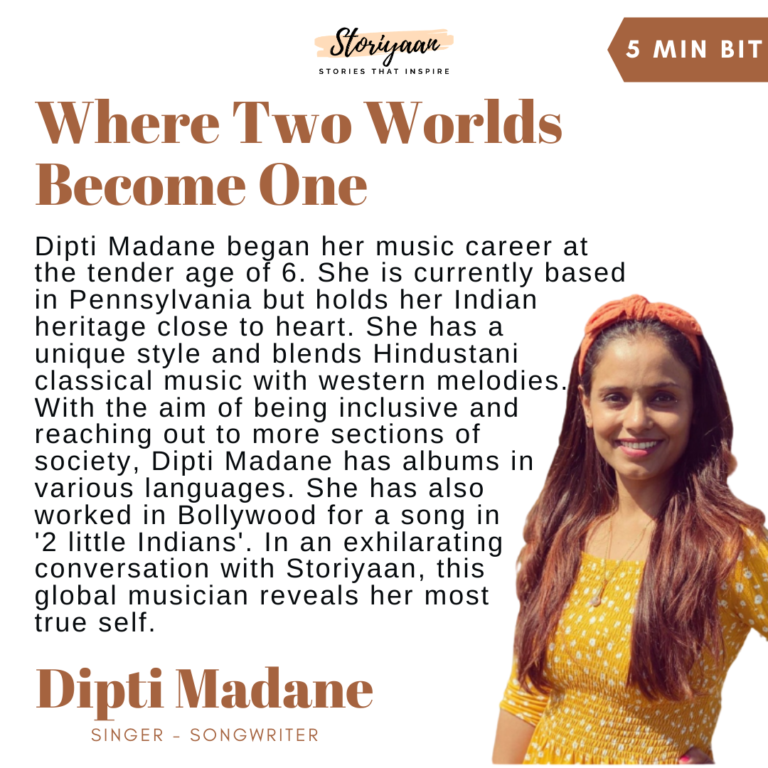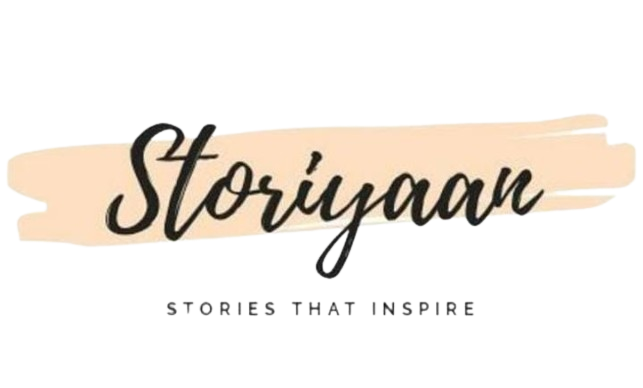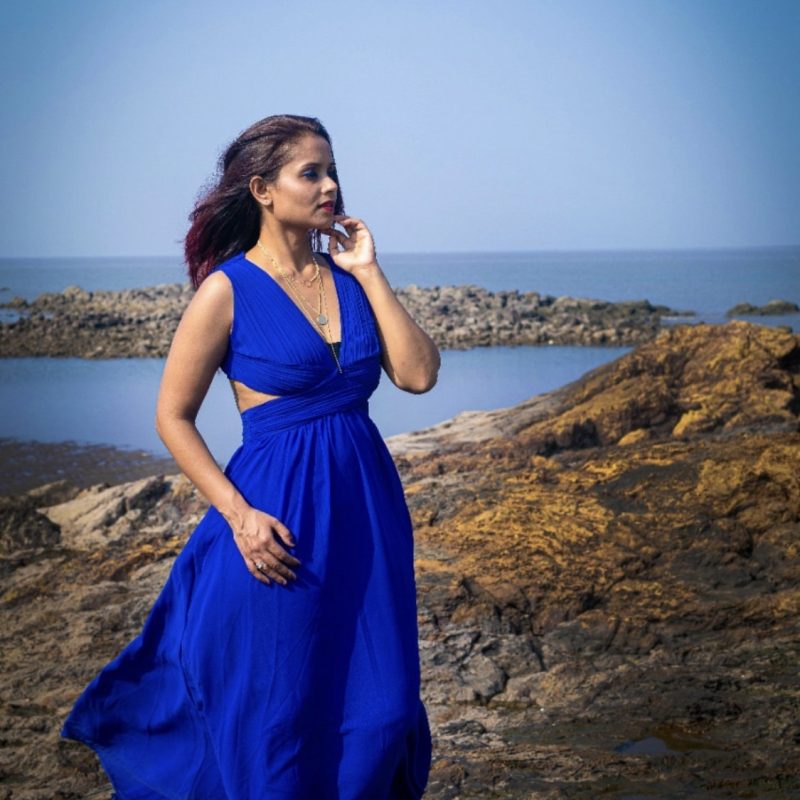Dipti Madane began her music career at the tender age of 6. She is currently based in Pennsylvania but holds her Indian heritage close to heart. She has a unique style and blends Hindustani classical music with western melodies. With the aim of being inclusive and reaching out to more sections of society, Dipti Madane has albums in various languages.
She has also worked in Bollywood for a song in ‘2 little Indians’. In an exhilarating conversation with Storiyaan, this global musician reveals her most true self.


Interview
Questions and answers
How did the genre of Hindustani classical music turn out to be a boon for your singing career?
I started my journey when I was six years old, and I began learning classical music because of my mother. Having learnt from a guru gave me a different perspective on music and singing. That’s what drew me to Hindustani classical music, and I’ve been living every step of my journey. My mom and dad were always inclined to classical music and growing up I used to hear music in my house and that’s how it became an integral part of my life.
How did you first come up with the idea of mixing the two genres of music – Hindustani classical with western?
When I came across Instagram, I saw people doing so many different things on the platform. That lit a fire in me to do something unique and leave my mark in the world; that is when I mixed two songs for the first time. I used to get hints of Hindi songs in English ones, and that’s why I started singing them both together. I try to make my work stand out by including ‘Allaps’ and ‘Sargams’ in English songs and creating a mélange that’s never been heard before.
Tell us about your experience working with Javed Ali for "Tinka tinka" for the movie "2 Little Indians".
I was sitting in a studio with a friend of mine, engrossed in some sample work. Ravi Bhatia, the director of the movie, was there and heard me sing and offered me a song in the film. I went into the studio the next day, and my journey began. All of this happened while I was working full time in IT. Unfortunately, Javed Ali wasn’t present and I never got the chance to meet him. However, the experience was unique; I got the chance to see my name alongside Javed Ali.
You have also sung for multiple regional language albums in Mumbai. Tell us about your most memorable experience in the field.
I was initially struggling and going from studio to studio to make my voice reach out to the world. This was when I met Maaru brothers, who were promoting young singers at the time. They were Gujaratis, and they had a lot of devotional work in their studio lined up. So that’s how all of my work and the regional album came into being; all thanks to the Maaru brothers. I never knew this genre of music would become such a hit; the niche in the industry is still booming, and I couldn’t be happier.
By December 2, you have had 11.6k streams on Spotify. What are some of the promotional strategies adopted by you?
I wanted people to stream my music and to be engrossed in my music for at least 10-15 minutes. Fortunately, I met Tanooj Saini, owner of ‘Twelve Strings Productions’. He is the one who pushed me and introduced me to the world of marketing songs through unique strategies. Additionally, a basic strategy was to put out as many songs as possible. Buying services for promotions is easy, but it is temporary and unauthentic, I don’t take that road. The real appreciation comes from working had, putting your music out there and trusting that it will do well.
Of all the covers you have made to date, which one has been the most challenging of all and how?
Every cover comes with a challenge. I once picked up a raga called Puriyadhanashree, and there’s a bandish in that raga called Payaliya jhankar, which can be heard in the Bollywood film, Rangeela. Tanooj and I converted that into a song, which was an uphill battle, since we wanted to keep the essence of the raga intact. We wanted it to be a rhythmic integration of Mukhras, Antaras and Aalaps, which was challenging for me to sing.
Like every artist, you too must have faced unwarranted negative criticism. How did you deal with it?
Personally, I haven’t yet encountered any negative comments, especially on social media platforms. However, I’m at that stage in life where I’m facing more rejection than criticism. It’s important to not let any of that pull you down because this industry is brutal, and if you’re weak, it’ll break you down.
Tell us a bit about your work "What's Stopping You".
‘What’s stopping you’ was my first original, which I released in November. I started writing it because I felt very strongly about the people that nowadays hold back a lot and don’t follow their dreams. I wrote this song to make people look at themselves with the awe in which they look at the people they look up to. The song is in the EDM style of music because I always wanted to explore that side, listening to Alan Walker.
How do you mix and match songs so as to create the perfect blend for your mashups?
I have roughly one or two mashups on my YouTube channel. The process behind compiling mashups was very lengthy; it involves making a cover, a song and then putting it all together. A friend of mine, Krunal Shah helped me with it all. I released my first mashup, comprising of three languages, English, Hindi, and Marathi, and it came out beautifully. My friend Neha Madkaiker sung the second mashup with me.
However, for the pursuit of commercial success, I reverted to originals and singing only one song, self-made or covers.

